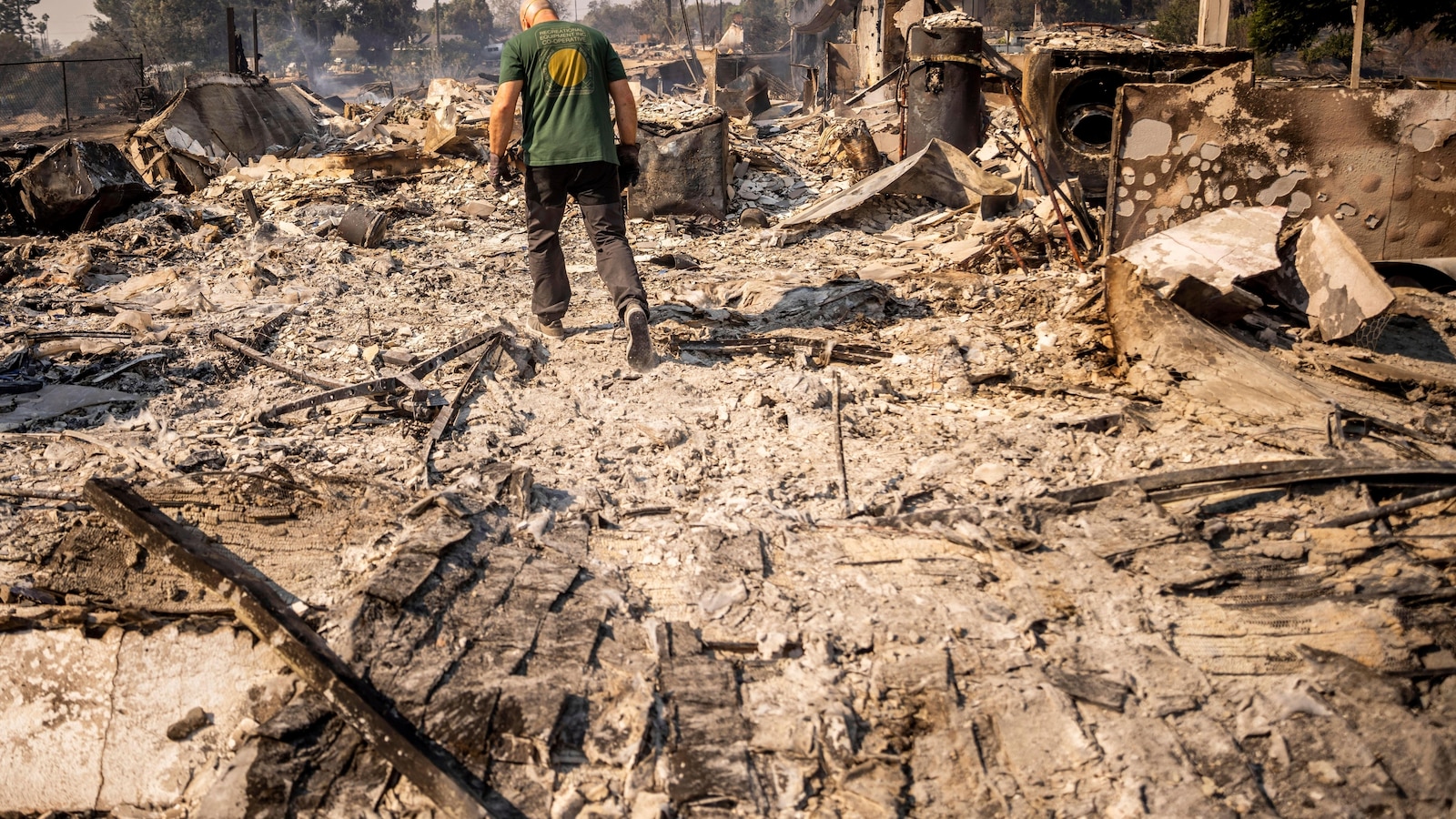Unleashing the Fury: How Decade-High Winds Threaten Southern California’s Fire Safety
Southern California is no stranger to the devastating effects of wildfires, but recent reports indicate that the region is facing unprecedented wind speeds that could exacerbate an already critical fire risk. As the Santa Ana winds howl through the canyons, conditions are drying out, and experts are raising alarms about potential disasters if effective safety measures aren’t implemented. This article delves into how these decade-high winds threaten fire safety in Southern California and what can be done to mitigate these risks.
The Science Behind the Winds
Understanding the phenomenon of the Santa Ana winds is crucial in assessing their impact on fire safety. These winds are strong, dry offshore winds that occur in Southern California, typically between September and April. They are characterized by a warm, dry air mass that descends from the mountains, resulting in increased wind speeds and decreased humidity levels. This combination of factors creates an environment ripe for wildfire ignition and spread.
Historically, the region has seen wind gusts reaching over 70 mph, particularly in the mountainous areas. This year’s forecast predicts gusts that could rival those seen in previous decades, with the National Weather Service alerting residents to prepare for extreme weather conditions. The following factors contribute to the fire risk posed by these winds:
- Low Humidity: As winds sweep down from the mountains, they can lower humidity levels to critical points, below 10% in some areas.
- High Temperatures: Warm air combined with dry conditions creates a tinderbox environment, where even a small spark can ignite a massive blaze.
- Increased Fire Spread: High winds can carry embers over long distances, allowing fires to jump fire lines and spread rapidly.
The Historical Context of Fire Risks
The past few decades have seen a significant increase in wildfire activity in Southern California, driven by climate change, urban expansion, and natural weather patterns. Major fires like the 2018 Woolsey Fire and the 2020 El Dorado Fire have resulted in devastating losses to property and life, underscoring the urgent need for effective fire management strategies.
According to the California Department of Forestry and Fire Protection (CAL FIRE), an average of 7,000 wildfires occur each year, burning over 1.5 million acres. With the combination of decade-high winds and dry conditions, experts predict that 2023 could be one of the most challenging years for fire safety in the region.
Potential Consequences of High Winds
The implications of these extreme winds are far-reaching. Communities across Southern California face several threats:
- Evacuations: High winds can lead to rapid fire spread, necessitating urgent evacuation orders for residents in vulnerable areas.
- Infrastructure Damage: Strong winds can topple trees and power lines, causing outages and increasing the risk of sparks igniting fires.
- Air Quality Issues: Wildfires contribute to poor air quality, which can have severe health effects, especially for vulnerable populations such as the elderly and those with respiratory conditions.
Community Preparedness and Response
In light of these threats, community preparedness has never been more critical. Local governments, fire departments, and residents must work together to enhance fire safety measures. Here are some ways to bolster preparedness:
1. Creating Defensible Space
Homeowners are encouraged to create defensible space around their properties. This involves:
- Clearing away dead vegetation and debris.
- Using fire-resistant landscaping and building materials.
- Maintaining a buffer zone of at least 30 feet free of flammable materials.
2. Emergency Plans
Every household should have a well-thought-out emergency plan that includes:
- Evacuation routes and a meeting point.
- Emergency contact information.
- Preparedness kits with essential supplies.
3. Community Engagement
Engaging with community programs and attending local fire safety workshops can provide valuable knowledge and resources. Many fire departments offer educational sessions on wildfire prevention and safety.
Technological Innovations in Fire Safety
Advancements in technology are playing a pivotal role in enhancing fire safety measures. From satellite imagery to predictive modeling, technology is helping authorities anticipate fire behavior and deploy resources more effectively. Some notable innovations include:
- Remote Sensing: Satellites can detect heat anomalies, allowing for quick identification of potential fire outbreaks.
- Predictive Modeling: Algorithms can analyze weather patterns, vegetation conditions, and wind speeds to forecast fire risks and paths.
- Drone Surveillance: Drones equipped with thermal imaging cameras can survey affected areas, providing real-time data to firefighting teams.
Conclusion: Hope Amidst the Fury
As Southern California braces for decade-high winds, the threat to fire safety is palpable. However, with the right preparations, community engagement, and technological advancements, there is a path forward. While we cannot control the fury of nature, we can take proactive steps to protect our communities and loved ones. By understanding the risks and preparing accordingly, we can mitigate the impacts of these fierce winds and work together to ensure a safer future.
In the face of adversity, resilience shines through. Southern Californians have faced wildfires before and will continue to do so, armed with knowledge, community spirit, and an unwavering determination to protect their homes and families.
See more Your Daily Weather



